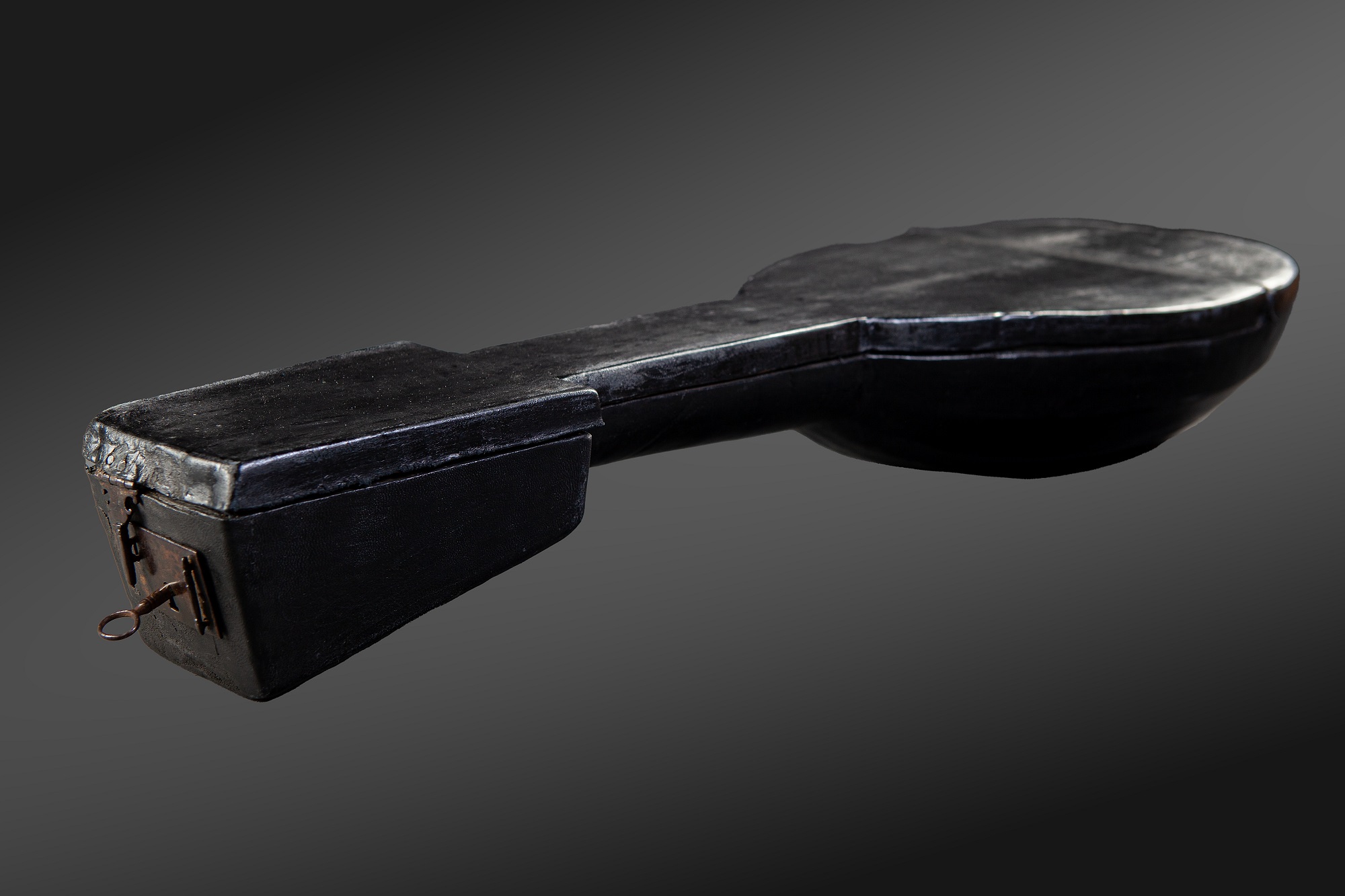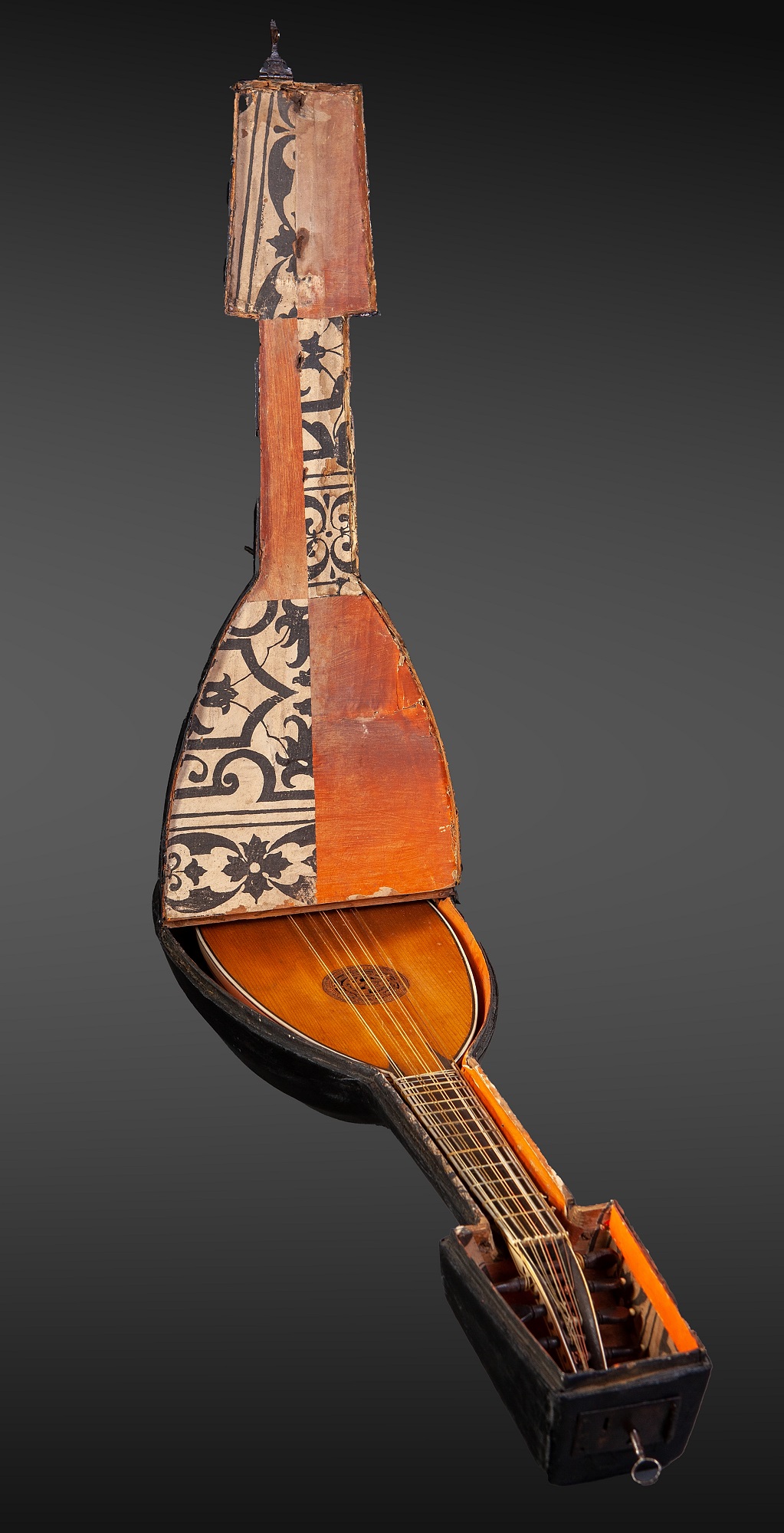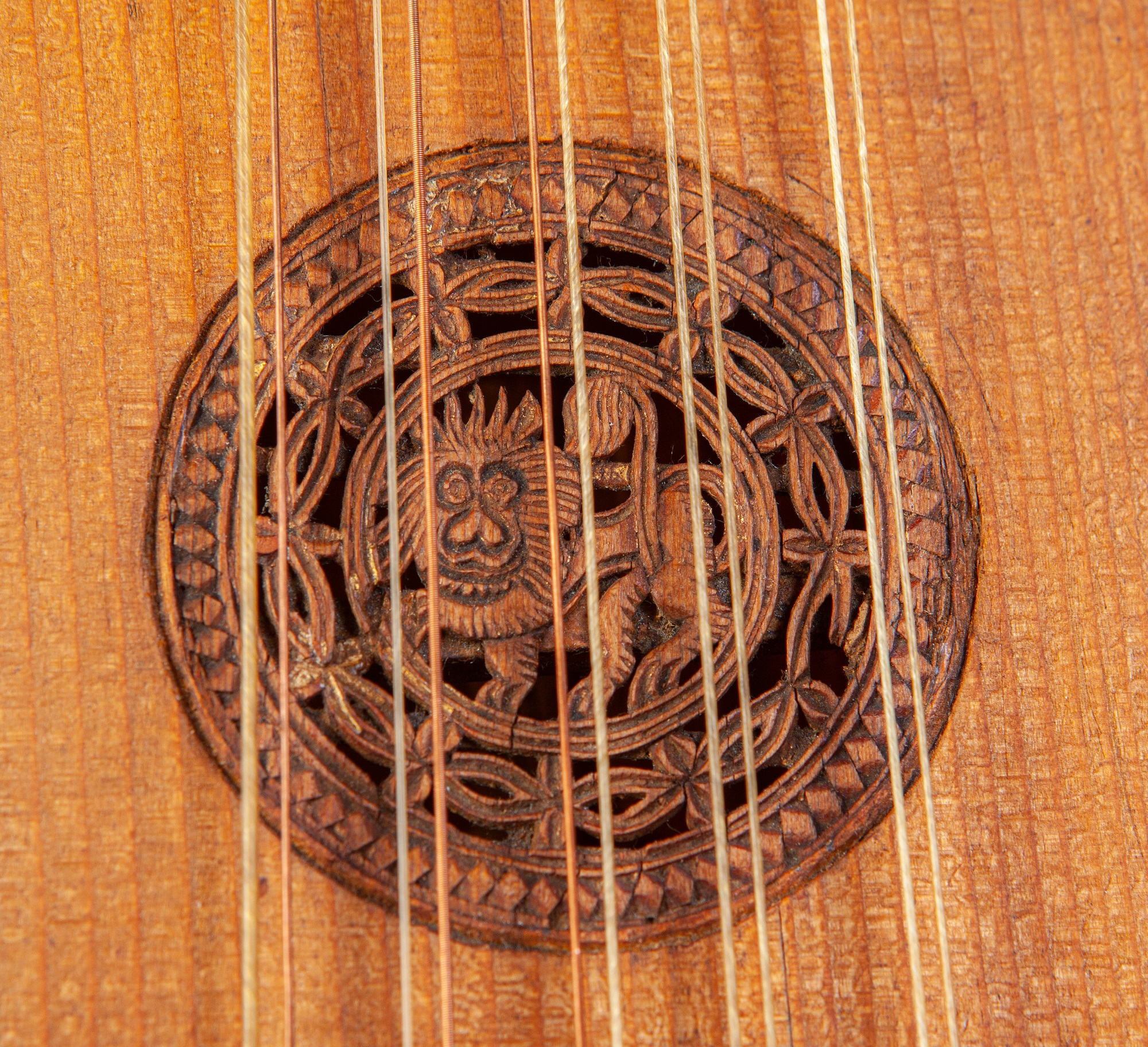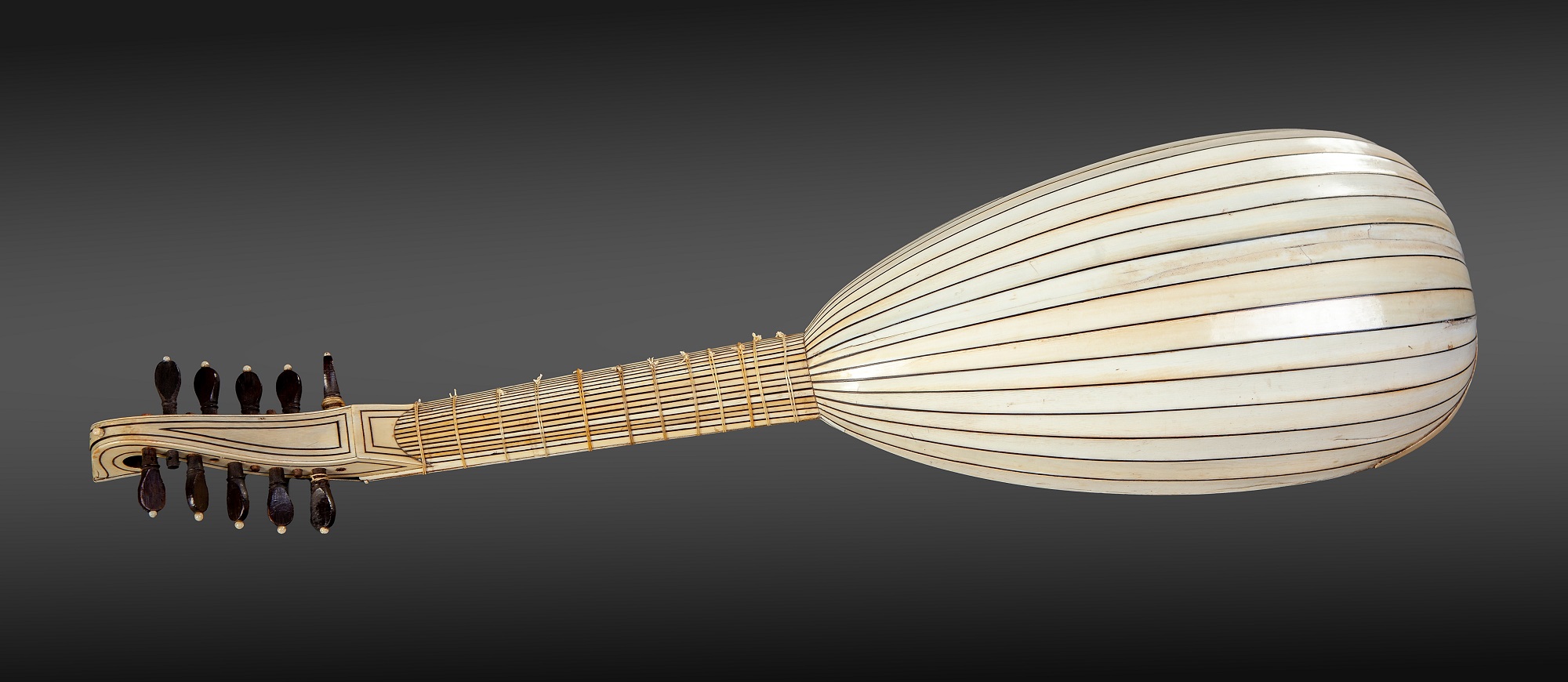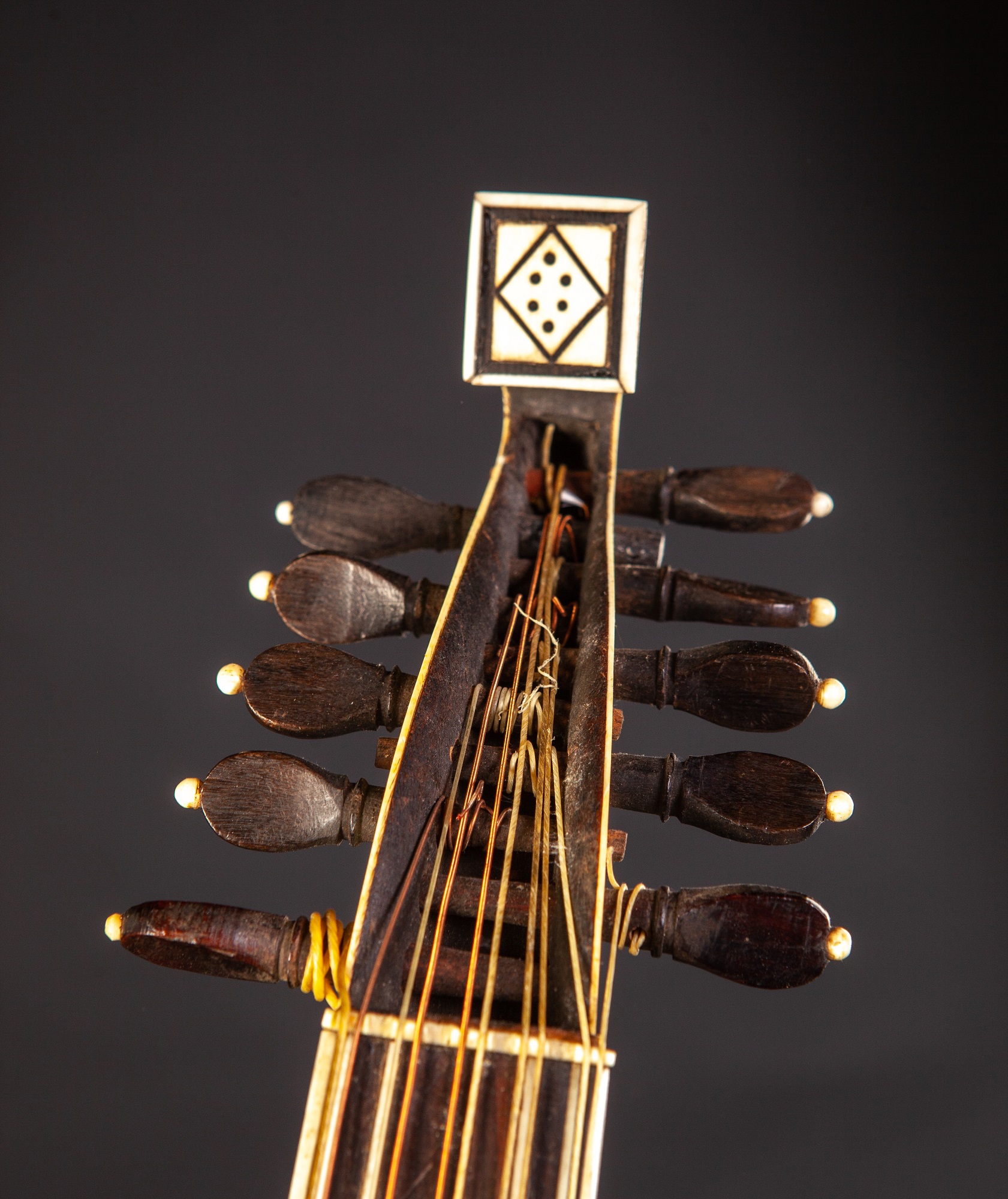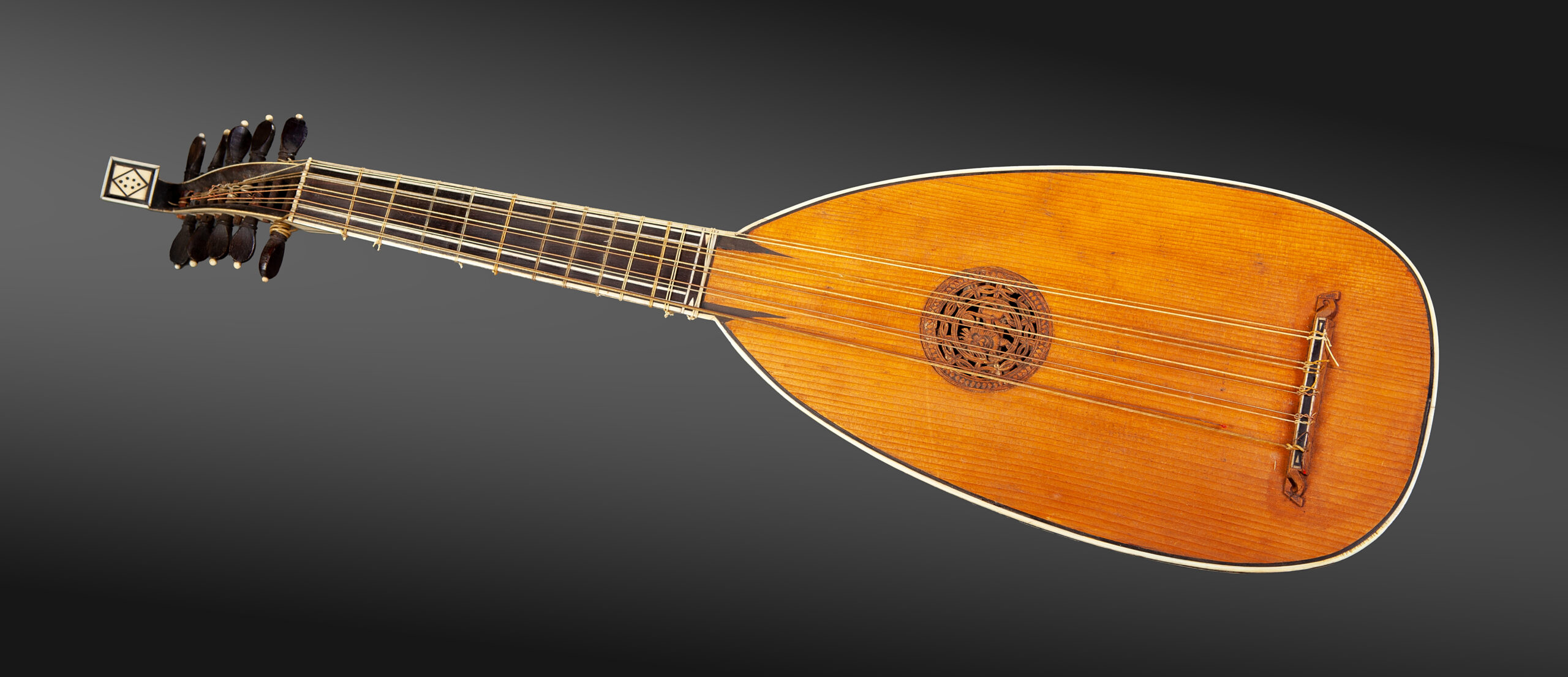LUTE by Bartoloméo EBERSPACHER in FLORENCE, 17th century
Originally from Germany and probably from the region of Füssen, where a “numerus closus” framed the installation of musical instrument makers, B. Eberspacher emigrated to Italy like many of his colleagues.
He opened his workshop in Florence and quickly became one of the most famous instrument makers in Tuscany.
Labelled in the body: “Bartholomeo EBERSPACHER / in FIORENZA 1693”
The body made of 17 ribs edged with ebony fillets.
The sesign of each rib goes on the neck until the pegbox. This one, ivory plated, is terminated with a scroll bearing the arms of the Medicis.
The ebony fingerboard is edged with ivory fillets. Spruce soundboard, probably later, with the original carved rosette representing the head of the Marzocco. Five courses tuned with ten ebony pegs.
This lute is preserved in its original case.
Total length: 75cm. Soundboard length: 37,6cm.
The fingerboard is in ebony inlaid with ivory fillets.
The back table is spruce. It retains the original rose window representing a lion, symbol of Florence.
The five-course set is held together by ten ebony pegs, one of which has been replaced.
The instrument has been kept in its original case.
Total length: 75cm.
Table length: 37.6cm.
Table width: 20.7cm.
Scale: 54.4cm.
NB: A restoration report has been drawn up
Bartolomeo Eberspacher is one of those German luthiers, most often coming from the Fussen region, and settled in Italy between the 16th and 17th centuries. It remains quite mysterious, given the lack of written documents mentioning it. In 1968, Luisa Cervelli (see bibliography) observes that we know of her work only the theorbo from the Heyer Collection, today in the Leipzig museum, (N°498, Kinsky catalog) taking up here the example of which Vannes reproduces the label in his dictionary. As for the name of Eberspacher, Giovanni Antonioni puts forward the hypothesis of a transformation of the name of Tieffenbrucker.
Bibliographie: Luisa CERVELLI: “Brief notes on German Luthiers active in Italy from the 16th to the 18th century”; Analecta Musicologica, Graz, 1968.
René VANNES: “Dictionnaire universel des luthiers”; Les amis de la musique, Brussels, ed 1979.
Giovanni ANTONIONI: “Dizionarion of plucked instrument makers in Italy”; Turris publisher, Cremona, 1996
